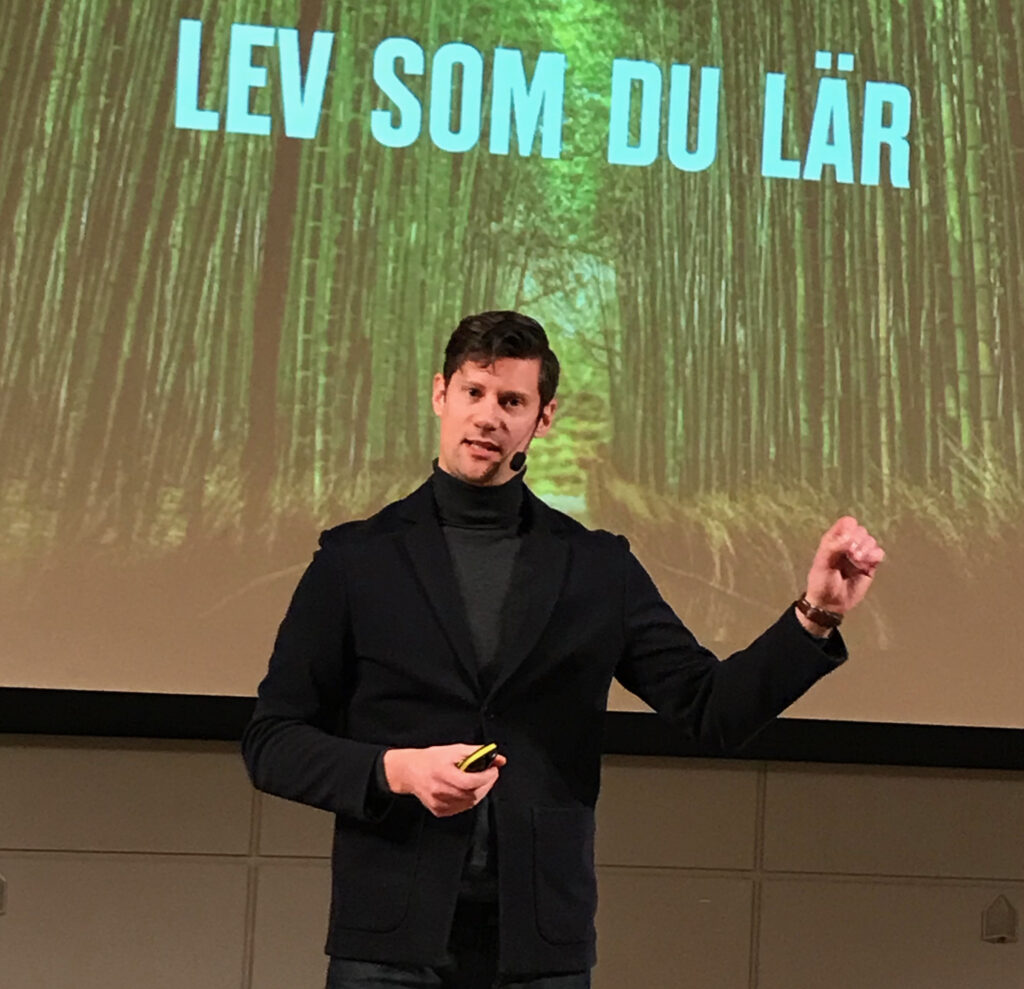
THE SHORT STORY:
The interest in behavioral economics has grown over the years, ever since the psychologist Daniel Kahneman was rewarded Nobel Memorial Prize in Economic Science.
Understanding the human psyche, how and why people react as they do, is of great value for brand owners and marketers, as it is possible to design services, products and processes to make it easierfor the consumer to make the desired decisions. The concept has been named “Behavioural Design”, by the Swedes Niklas Laninge (who is a psychologist and lecturer) and Arvid Janson (designer and civil engineer). In this context, design means not only the visual expression, more the process that leads to the outcome.

Behavioral design can be described as the applied version of behavioral economics. With psychological research as a starting point, it creates a systematic approach to finding solutions to both small and big problems.
The goals of behavioural design are to change behaviours, not attitudes.
And this is not made by increasing the consumer’s motivation, but about lowering their resistance.
THE LONG STORY:
Understanding why people act as they do in different situations also makes it possible to influence their actions. This is the very essence of the concept Behavioral Design.
“The advertising and marketing business have, for a very long time, worked with some kind of pseudo-science in combination with art. The industry is standing on one business leg and one artistic leg”, Niklas Laninge told me when I interviewed him earlier.
In the book “Behavioral Design”, he and Arvid Janson have gathered a large number of insights from research and empirical data on behavioral economics and decision making. They have built a framework for how everything is connected and named the building blocks used. As well as the stumbling blocks in the form of logic errors, which can overturn many opportunities.
“We have created the framework around fairly old, psychological findings. It’s much easier when you name things. When we have the pattern, we can also see how we make people make the right decision”, said Niklas Laninge.
With behavioral design it’s possible to influence behaviors of various kinds which is of course of importance to marketers.
“In marketing communication, marketers far too often talk about changing attitudes. We mean that you have to work with concrete goals”, said Niklas Laninge, who emphasizes that it is behaviors, not attitudes, which are the concrete goals.
And these behaviours should be Specific, Measurable, Accepted, Realistic and Timed – in short: SMART.
And when formulating the desired behaviour, you must ask yourself: who should perform it, when should they do it, where should they do it and how often should they do it.
It’s necessary to find out who are motivated to change their behaviour and who are less motivated. The question then is what can be done with those who are less motivated.
“You should not engage in motivation-enhancing efforts in any case. Activities like coupons, discounts and arguments are blunt instruments and work poorly. Instead, it is important to lower the thresholds for a changed behaviour”, said Niklas Laninge.
There are a number of measures that can be taken, in different areas and with different methods, to make it easier for the consumer to make the right decisions.
1. Reduce the number of choices
A wide selection is not always the best. One way to make decisions easier can be to not offer too many choices. When Steve Jobs came back to Apple, he reduced the number of products and left more or less four alternatives; a desktop and laptop for professional users, as well as a desktop and a portable for private users.
And the American professor, Sheena Iyengar at Columbia University, has studied the negative effects of increased freedom of choice more closely.
Some of her students performed an experiment in a large American grocery store by selling jam. They had a selection of six varieties of jam which they offered customers to taste. After one day, about 30 percent of the customers who tasted also bought a jar of jam.

But a few weeks later, the number of jams was increased to 24 varieties, and the result was completely different. Less than three percent of the tasters bought something.
2. Set the desired options as default.
In Sweden, for example, too few citizens have registered to be an organ donor. It is probably not because they are negative to organ donation, but because it requires an active action – to register oneself. In countries where the situation is the opposite, that is, the citizens are automatically enrolled in the donor register until they explicitly say they do not want to, a very small percentage choose to leave.
In Germany an attempt was made to increase the proportion of green electricity. In a test, consumers were given two choices of energy sources, one of which came from renewable sources. This would mean a modest additional cost of approximately EUR 10 per year. Only seven percent chose that option. But, when green electricity was instead stated as the default option on the form, nearly 70 percent also chose to keep that option.
3. Use the context right
Behavioral design is not necessarily about making major changes or invent exciting new digital solutions. Sometimes it can be very simple means and perhaps just a matter of expressing the choices properly.
Niklas Laninge describes how his grocer in Stockholm wanted more people to buy organic bananas. But instead of highlighting all the advantages of choosing organic, the grocer did the opposite. In the Fruit and Vegetable Department, he indicated “Organic bananas” and “Bananas sprayed with pesticides”, respectively.

It turned out to be so effective that he soon did not have to sell anything else than organic bananas.
4. Zoom out to the whole picture
Behavioral design can often be about doing the opposite, from what you might think. Like at the airport in Huston where travelers were complaining about long waiting times at the baggage belt. The airport management hired even more luggage loaders and could thus significantly reduce waiting time. But even though the bags were on the band within eight minutes, the complaints stayed at a high level. When studying the problem in a larger perspective, the fact that passengers only needed a minute to get from the plane to the luggage belt was noticed. There they then had to wait for seven minutes.

The problem was solved by moving the gates further out in the terminal, so the passengers had to walk a bit longer to get to the luggage belt. When they arrived, it only took a few minutes before the bags began to roll.
5. Find the trigger
A trigger reminds us that some behavior can lead to a reward of some kind. There are many such examples in marketing. An interesting variant is that limitations can mean that we put a higher value on a product. It can therefore be very effective to spur on a lack. Already in the 1970s, a simple study was made at the University of North Carolina, where a group of people was offered cookies from two different jars. In one jar were ten cookies and in the other two. They did not know that al the cookies came from the same package. And even though it was exactly the same type of cookies, those which came from the jar with only two cookies were considered to taste better.

6. Rewards can be very small, but effective
Small rewards are often used to achieve desired behavior from people. A movie ticket, a discount coupon or a lottery ticket are common tricks in the context.
But, it’s possible to get quite far with nothing too. Niklas Laninge and Arvid Janson collaborated for several years with the product developers at an insurance company, which among other things offered car insurance. Each year, a large number of customers left the company when they were asked to renew their insurance. For several years, the company had used discount coupons to make their customers extend the insurance. But Laninge and Janson thought it would be interesting to compare the offer of discount coupons with nothing. So, for a month, four different alternatives were tested for different groups of customers:
20 Euro discounts if the insurance was extended.
20 Euro discounts on another insurance if the car insurance was extended.
No discount at all, only the offer to extend the insurance.
No discount, but a nice thank you card with the text: “Thank you for being a customer with us for the past year. We just want you to know that we appreciate having you as a customer and would be proud to keep you for another year.”
The result was not what was expected. The option with no discount at all worked the worst. But the other three alternatives were equivalent. It is not that difficult to figure out which model the insurance company has used since then.
Be ethical and think outside the box!
Niklas Laninge emphasizes that behavioral design should be used in an ethical manner. It can be abused but should always be about nudging people in the right direction.
“It makes them do what they probably wanted to do anyway, but didn’t because they lacked time or knowledge, or they were maybe just too lazy”, he summarizes.
And it can apply to most areas. In the book, Laninge and Janson describe a somewhat odd example of how behavioral design solved a difficult problem at Schiphol airport in Amsterdam. There, the cleaners had a lot of extra job keeping the urinals clean. It was simply necessary to make the visitors stop splashing outside. Signs with sharp requests to aim right, or the alternative of replacing the existing urinals with new ones with some other design were some thoughts. The final solution was as simple as brilliant. A fly was painted, right at the drain of the urinal. It was realized that many would try to tickle the fly. Which of course was true and a few weeks later, the cleaning workload of the cleaning staff had decreased by 60 percent.
So, with the knowledge of human nature and how to influence and shape decision-making processes, it’s possible to come a long way. Sometimes a little extra long with a visual marker, even if it’s just a fly.


